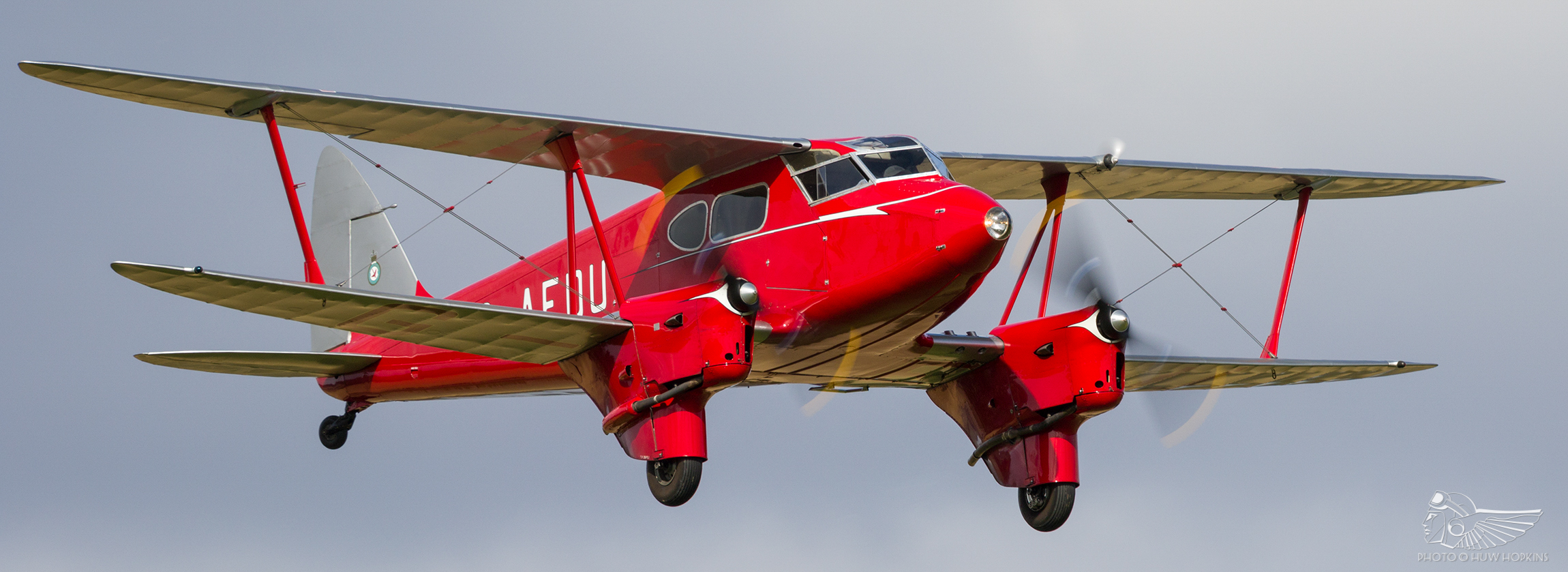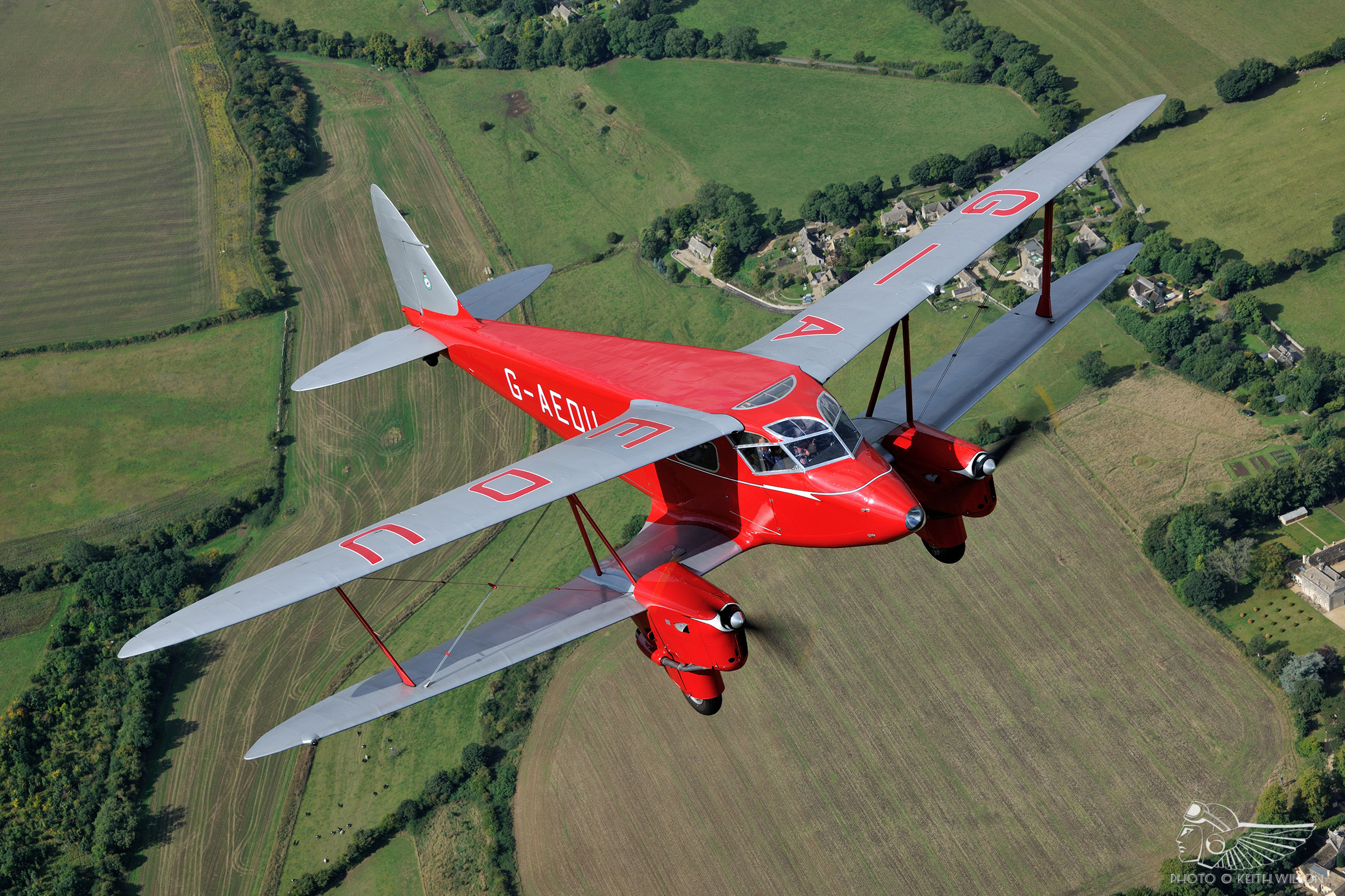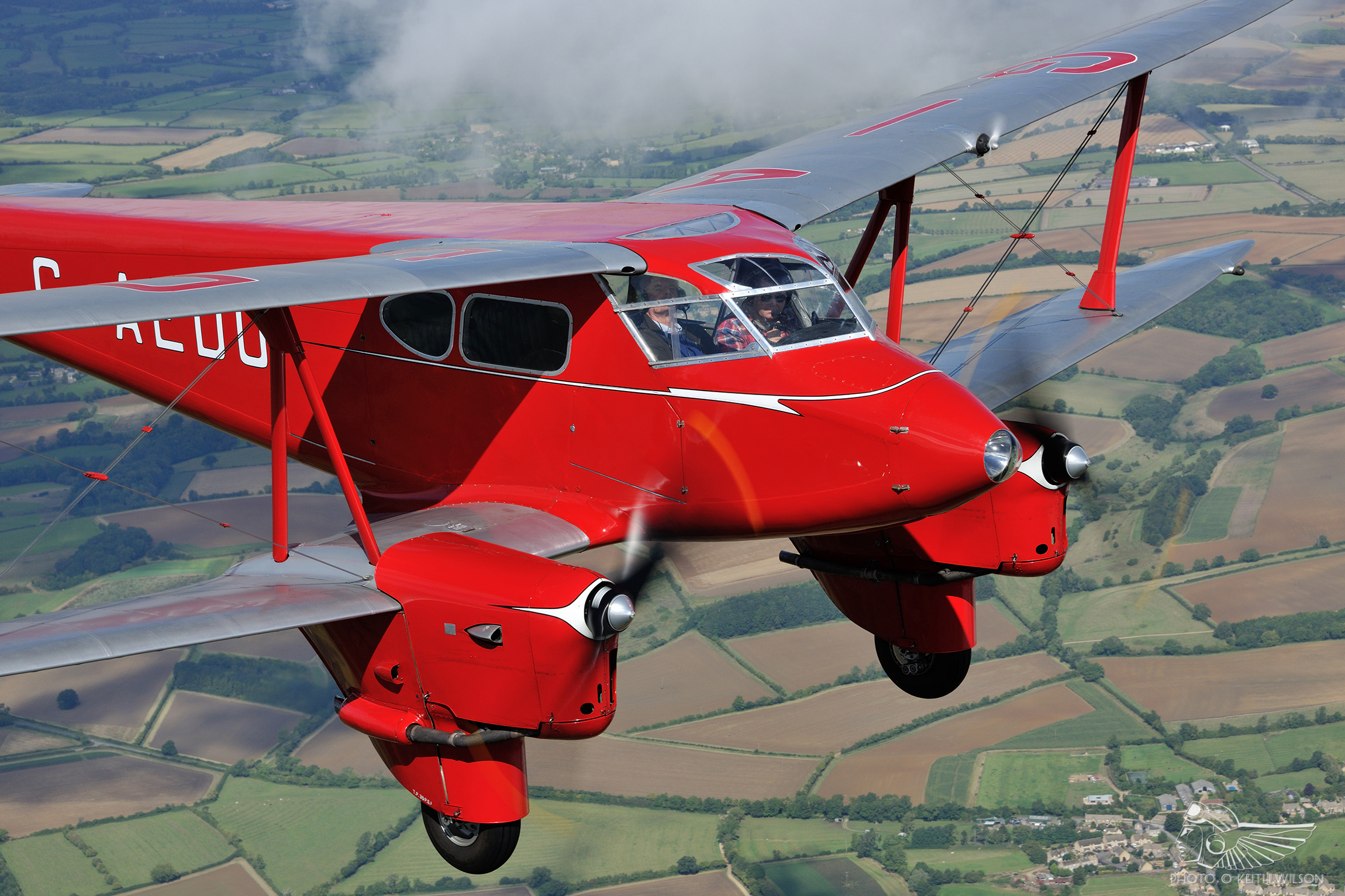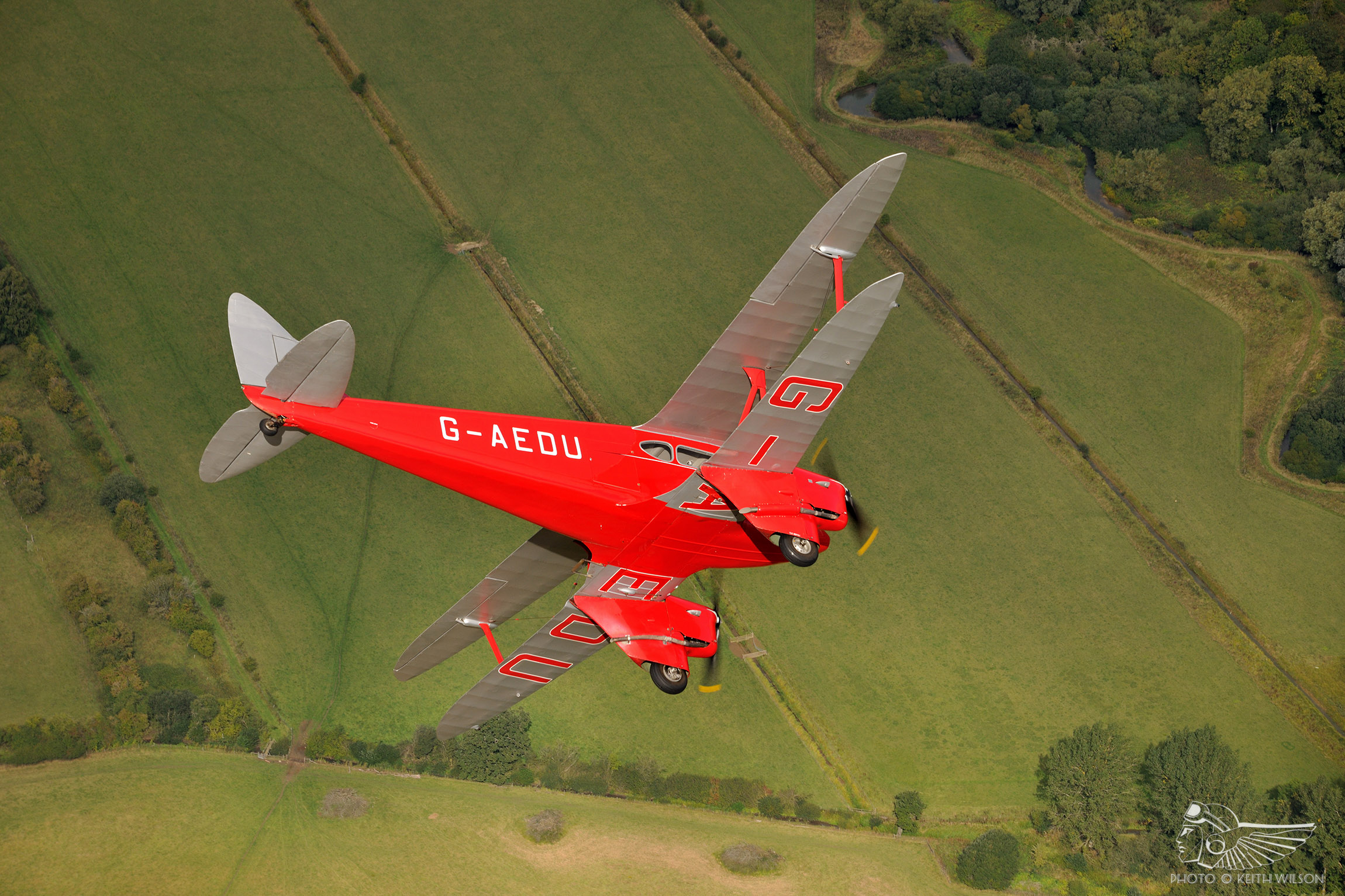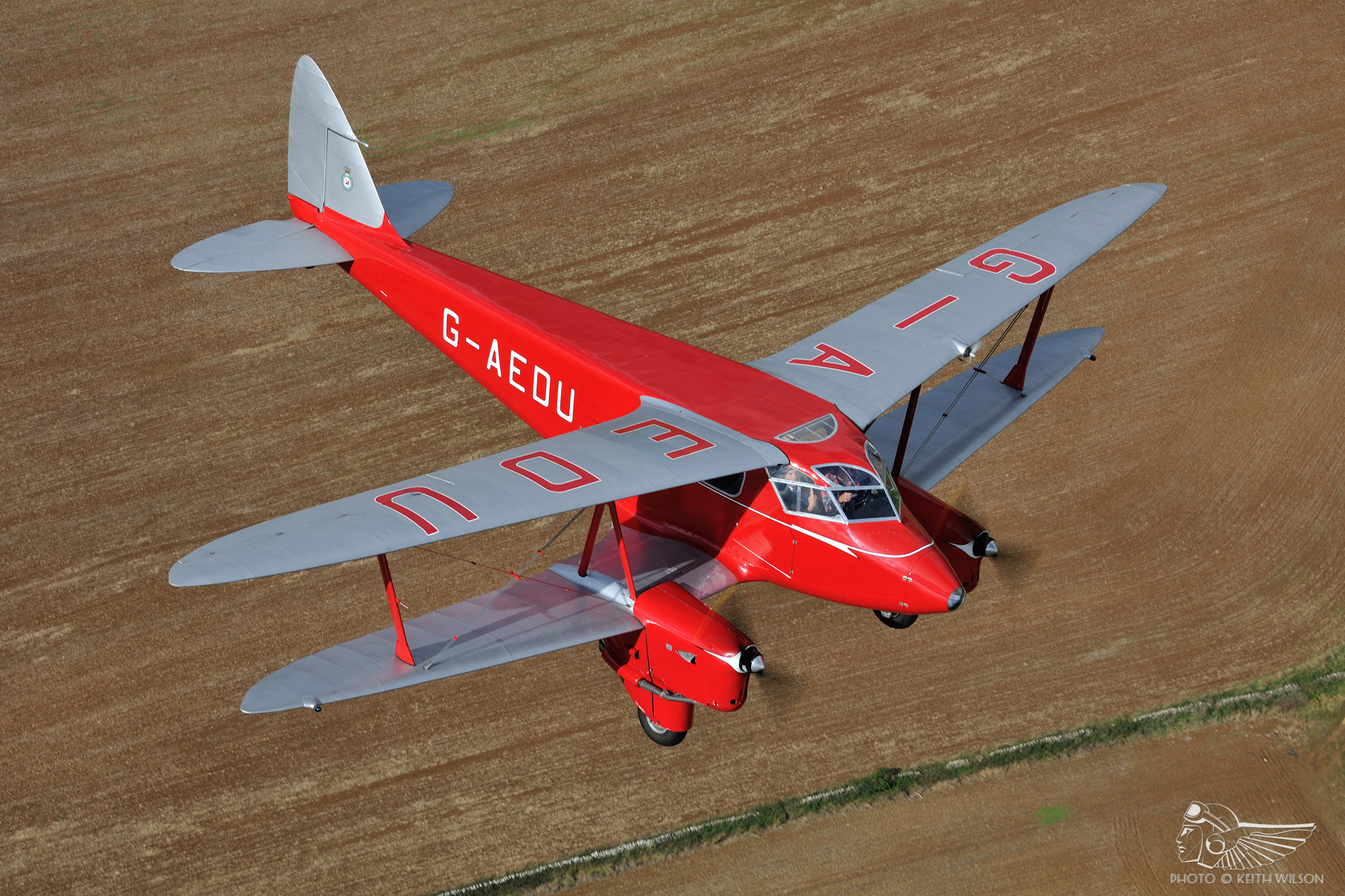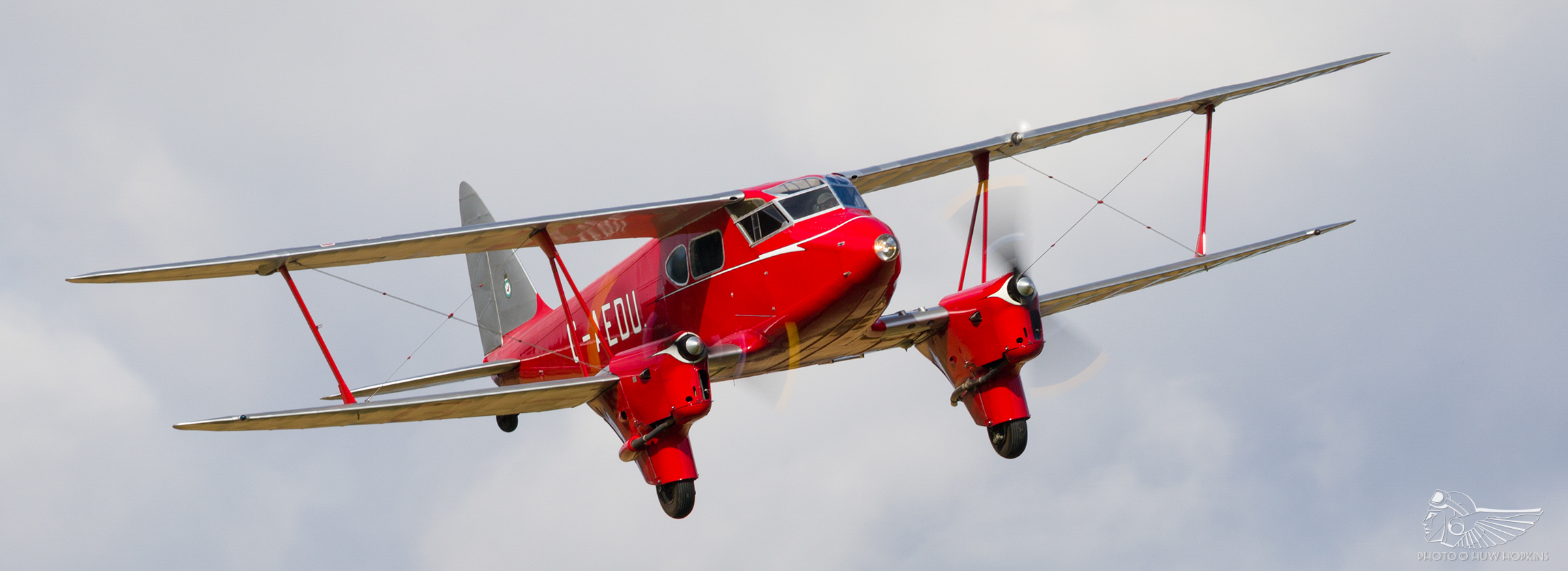Pilots have a common passion for the air whatever they fly – most private pilots are happy to fly the Cessnas and Pipers most prevalent at flying schools and get their aviation fix that way. The joy of sharing a flight with friends on the £100 cup of tea run is a frequent staple of the summer. However, some wish they could fly rarer and more exotic aircraft but see little opportunity to fulfil that wish.
For those with a passion for the golden age of civil aviation and the associated classic British and American light aircraft, a visit to Shipping and Airlines at Biggin Hill is an Aladdin’s Cave of aeronautical treasures. The fact the Peter Greenyer and his team offer such a warm and generous welcome means that any visitor cannot fail to get up close to these aircraft, and, if you are lucky, get a chance to fly and experience these aircraft for real.
Having grown up near Blackbushe where I witnessed the elliptical wingform of the Dragon Rapide drifting around the summer skies giving pleasure flights over the Hampshire countryside, the de Havilland twin engine transports have always had a special interest for me. The problem with the Rapide is that it only has space for a single pilot and hence any check out requires the instructor to crouch at the cockpit entrance with little chance to influence flight except by voice (perhaps with increasing pitch as things develop!).
However, the Dragonfly being more of an executive transport rather than an airliner does feature two pilot positions in a more conventional layout. Thus with Peter’s kindness, I got the chance to fly the Dragonfly G-AEDU on a visit by the Honourable Company of Air Pilots. I occupied the right hand seat (not inconvenient for an instructor) whilst friend and well-known fellow display pilot Dan Griffith commanded the flight from the left seat.
This aircraft is the only Dragonfly flying (although as Peter points out, there is another example in New Zealand currently being restored) and is a thing of beauty and a great representative of the period. G-AEDU is the newest member of the Shipping and Airlines collection and had its airshow debut at RAFA Shoreham 2014 where Dan gave yet another of his well crafted and graceful displays. The aircraft is resplendent in its cherry red paint scheme and is in immaculate condition.
The first challenge is getting in. The ground crew had thoughtfully provided one of those folding DIY platforms to get up onto the port wing root and then you enter via the good sized door behind the pilots’ seats. Because this is a tailwheel aircraft, the deck angle means you have to climb uphill. As all pilots know, climbing into a new type and unfamiliar aircraft means it is rather a challenge as you demonstrate the grace of a newly born giraffe and are paranoid about knocking or breaking things. To cope with the previously mentioned deck angle, there are sufficient places to hold onto and reasonably wide access to gain your seat without too much fuss.
Once seated, it is a comfortable position even with the tail down on the ground and the side window provides welcome ventilation. After strapping in, you can take in the vintage dash with the combination of the oversized P11 compass and the smaller, more quirky dials such as the electric RPM gauges. These are more like old fashioned electrical test meters than the mechanical gauges pilots are familiar with and it is hoped they work properly today!
Starting is typical Gipsy and greatly aided by the ground crew who can prime the engines and standby with fire extinguishers. For those not familiar, priming is done standing by the engine rather than in the cockpit. As an aside, this was one of the differences that had an impact when the Canadian Lancaster was over in the UK and they needed to replace an engine. The Canadian Warplane Heritage Museum machine was modified to use electric priming from the cockpit whilst the Battle of Britain Memorial Flight’s Lancaster still uses manual priming within the engine nacelle. This required these changes amongst others to be applied to the loan engine.
The other factor is if the engine coughs back through the carb, it can ignite the lower wing fabric. This is not an unheard of occurrence and having crew standing by with fire extinguishers minimises the risk. Various modifications have been tried over the years including metal cladding over the adjacent wing surface and extended exhausts, but vigilance and careful priming is perhaps the most effective measure.
One of the requirements and pleasures of operating vintage engines is really getting to know them and the right technique to get the correct ratio charge into the cylinders to aid easy starting. Although starting more modern engines by rote generally works, understanding the underlying process enables a pilot to better cope with variations of ambient conditions and the hot engine start syndrome. Flying aircraft designed and built before the word ergonomics had even been thought of and with potential modifications and differences, a check list is important to ensure all actions and settings have been applied. An area with significant variation is the fuel system, especially on an aircraft with six fuel tanks such as the Dragonfly. With actions completed, both engines started easily and settled down to warm to operating temperatures.
The seating position gives good visibility but with a large wingspan, taxying out of confined areas needs careful attention and the helpful ground crew are again a great assistance. For those who have not flown a multi engine aircraft, differential power is the norm when turning on the ground, reducing power on the engine on the inside of the turn whilst greater power is used on the outside engine with the addition of differential braking used as required. But this is also a tail-wheel aircraft and therefore more affected by the wind, so care together with positive inputs is the order of the day.
The run ups are pretty conventional and the check list again used to ensure correct configuration of the aircraft. Then, using Dan’s personal call sign, it is time to line up on the runway and let the pleasure commence. Although we had four people on board and a reasonable level of fuel, performance was not a concern and together with the length of Biggin’s main southerly runway, MCA (around 80 mph) and climb speed were quickly obtained.
As height increased so did the smiles. Taking off to the south the terrain falls away into a rural valley belying its position inside the M25 and looks more like Hampshire or Devon. This is the valley Ray Hanna famously used to disappear into and emerge from to great effect when displaying Spitfire MH434, sadly a practice discouraged these days, as it provided great drama to the routine. Sitting there thinking of such displays, the long tapered ellipse of the Dragonfly’s wing is rather like the elegance of a graceful Edwardian Aunt perhaps foretelling of the signature wing of the Spitfire, which ironically appears rather more stubby from the cockpit by comparison. There seems to be no aspect of the aircraft that does not exude period charm.
The Dragonfly shows its pedigree as executive conveyance with the expected heavy ailerons but beautifully light and accurate elevator and rudder. The pilot in the left hand seat has a full butterfly yoke whilst the right hand seat has a short joystick with a linkage to the main control. This is not too bad for normal flying or even a bit of formation but for more vigorous manoeuvring it would be very tiring. For those who have yet to fly twins, the additional performance provided by two working engines provides a solid feeling in the air and climbs just need back pressure rather fully opening the throttle. Indeed during all phases of the flight the rpm range seemed to only change by 200rpm until on short final.
It was quite a thermic day and flying in the Miles Messenger later proved to be rather a wobbly affair as it was greatly affected by the warm air bubbles. The Dragonfly, however, rode through it calmly as you would expect. As all the Shipping and Airlines collection, with the exception of the Rearwin, were flying we hoped to catch up with one of the others. Fortuitously, the delightful Civilian Coupe hove into view, piloted by Peter himself. The Civilian Coupe was displaying a surprisingly good turn of speed and it took longer to catch than expected before it turned back to Biggin. We then joined up with the Miles Messenger and spent a joyful few minutes flying in formation in echelon left before breaking away.
All too soon it was time to return to Biggin Hill to let some others members of the visit have their flight. With a cruising speed of around 125 mph there are no problems slowing down and fitting into the circuit. The precision of Dan’s handling and the Dragonfly’s pedigree meant only slight power reductions were needed to get within flap operating limits and as mentioned previously, power was only significantly reduced over the threshold. As with aircraft of this type and with a long runway available, the greatly preferred method of landing is a “wheeler”. A modicum of power is kept on to smoothly kiss the runway with the main wheels and the elevator is checked forward to pin the aircraft on the runway.
Power is then smoothly reduced and the tail held up to ensure the rudder is not blanked, especially as there was light crosswind from the right. As speed decays the tail is lowered and we taxy off the runway and back to the hangar, always aware this is a tailwheel aircraft and nothing is guaranteed until we come to a stop. As the engines clatter to a stop the grinning passengers break into chatter to express their joy at flying in such an aircraft. Flying is always a pleasure shared and with his collection, Peter raises the game to new levels.
Thank you to Peter Greenyer and his team at Shipping and Airlines for providing the privilege of flying the Dragonfly and Dan Griffith for the skills and explanation of how to operate this beautiful period British flying machine. More details about Shipping and Airlines can be found at www.shippingandairlines.co.uk and information about the Honourable Company of Air Pilots is available at www.airpilots.org.


